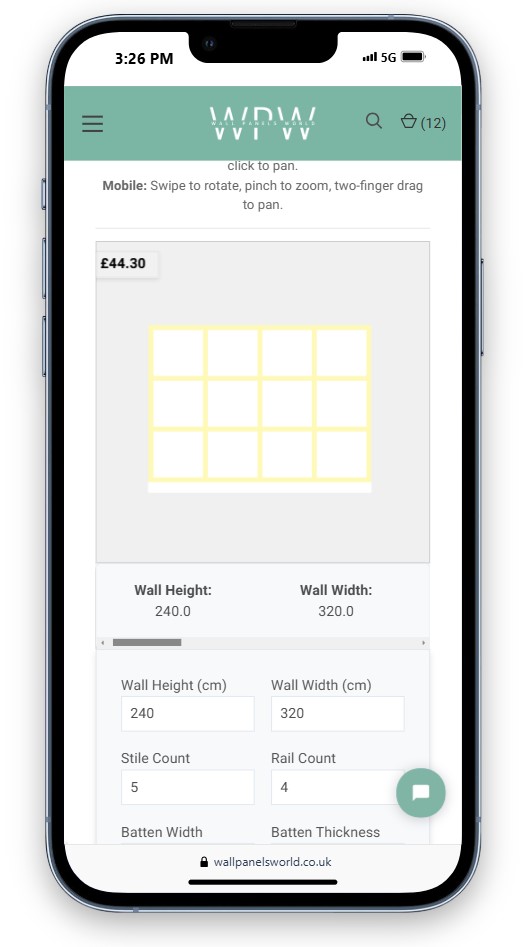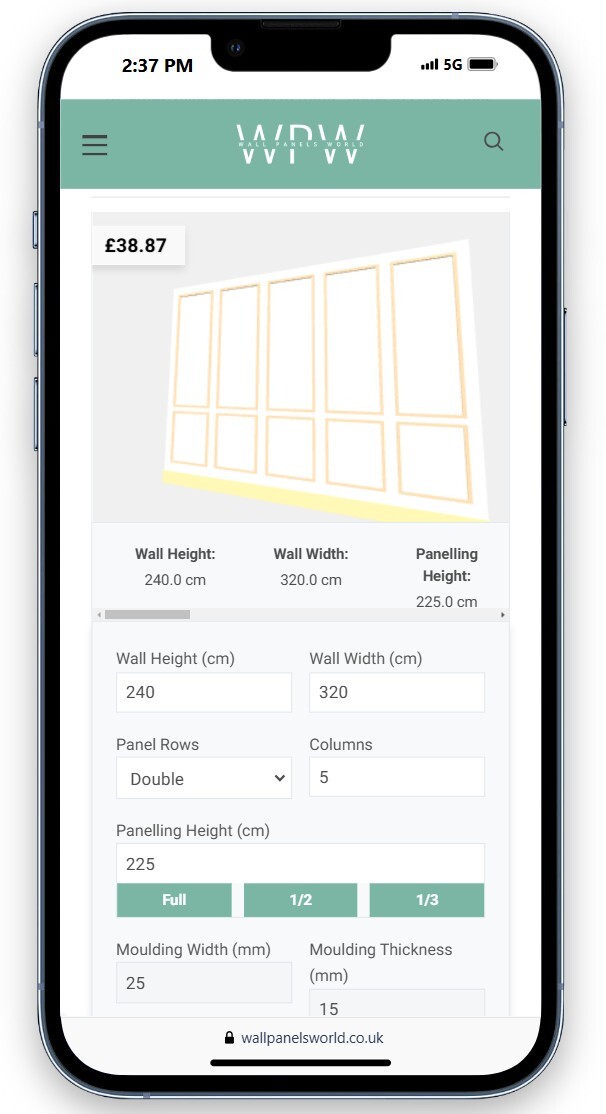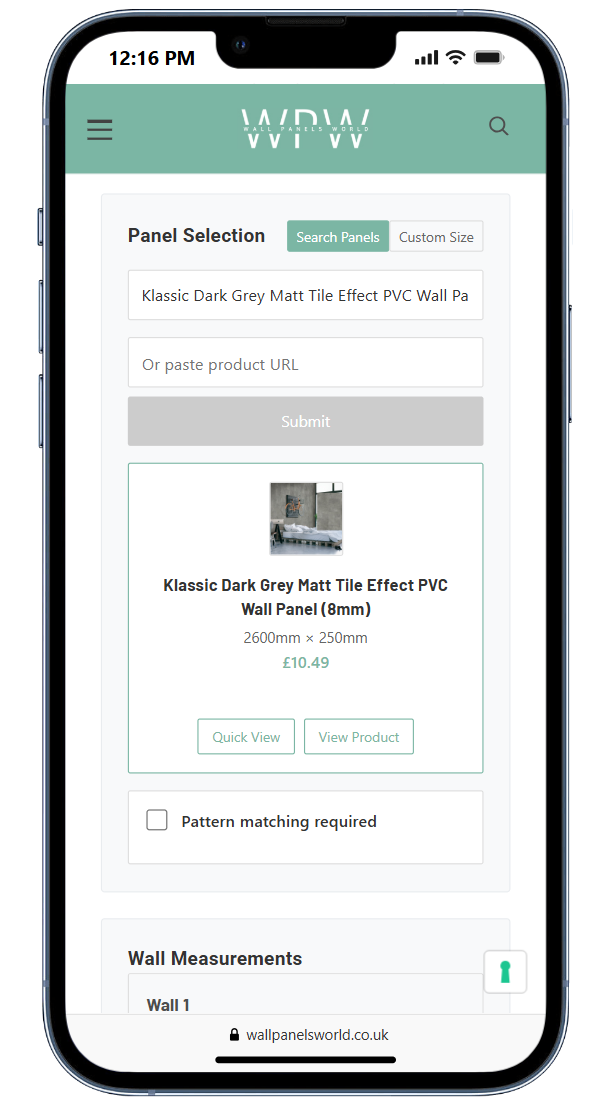Posted by Wall Panels World on 29th Aug 2025
Wall Panelling Cost | UK Material & Labour Panelling Costs | 2025
Wall panelling costs in the UK range from around £15 per square metre for basic MDF panels to over £200 for premium hardwood options. When you factor in professional installation, you're looking at total costs of £40-£225 per square metre, though DIY installation can cut these costs by 60-70%.
Quick estimate: A typical 4m x 3m room costs £500-£2,400 to panel depending on materials and whether you hire professionals or go DIY.

Material costs by type
The biggest factor affecting your wall panelling budget is material choice. Here's what different options actually cost in 2025:
| Material Type | Cost per m² | Best For |
|---|---|---|
| MDF panels | £15-£25 | Most rooms, best value |
| PVC panels | £6-£50 per panel | Bathrooms, kitchens |
| Pine panelling | £20-£50 | Traditional look, budget wood |
| Oak panelling | £60-£225 | Premium rooms, period properties |
| Acoustic panels | £20-£100 | Home offices, music rooms |
| 3D decorative panels | £35-£70 | Feature walls, modern interiors |
MDF panels offer the sweet spot between cost and quality for most projects. They're stable, take paint well, and come in various profile styles including popular Shaker designs. You can browse the full range of MDF wall panels to compare current prices.
Panel sizes and coverage
Most panels come in standard sizes that affect your square metre calculations:
- PVC panels: typically 250mm wide x 2600mm high (0.65m² per panel)
- MDF panelling strips: various widths from 63mm to 150mm, sold by linear metre
- Tongue and groove: 120-200mm wide boards, priced per m²
- Wall panelling kits: cover 2.8m length x 995mm height (about 2.8m²)

Shaker-style panelling like this bedroom feature works particularly well as a DIY project. The clean lines are forgiving for first-time installers, and individual moulding strips can create this look for under £25 per square metre including paint.
Want to see how your room would look? Order free samples to test colours and finishes before committing.
Planning and calculators - the DIY advantage
One hidden cost many people forget is that carpenters often charge £50-£150 just for measuring up and planning your panelling layout. Online calculators can do this complicated math work for free, turning what seems like a complex job into straightforward DIY.
These calculators do the complex spacing calculations that would normally require a carpenter's expertise. They can save you £100+ in planning fees while ensuring you order exactly the right amount of materials (we also include PDF plans to follow).
Why accurate planning matters
- Avoid waste: Order 5-10% extra instead of guessing and ending up 30% over
- Professional layout: Even spacing looks much better than eyeballing it
- Budget accuracy: Know your exact costs before you start
- Confidence boost: Having a clear plan makes DIY installation much less daunting
Professional vs DIY installation
Installation costs can double or triple your total budget, but the choice between professional fitting and DIY affects more than just price.
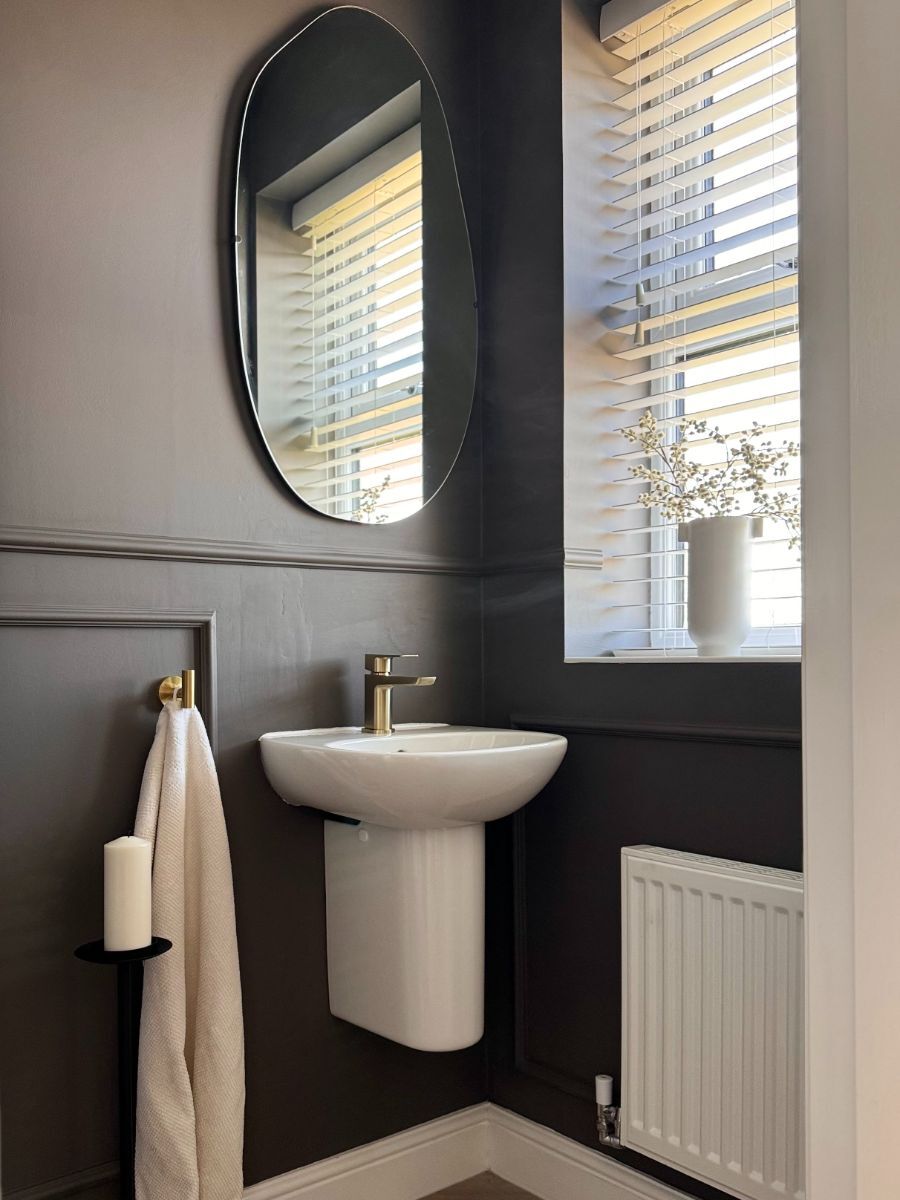
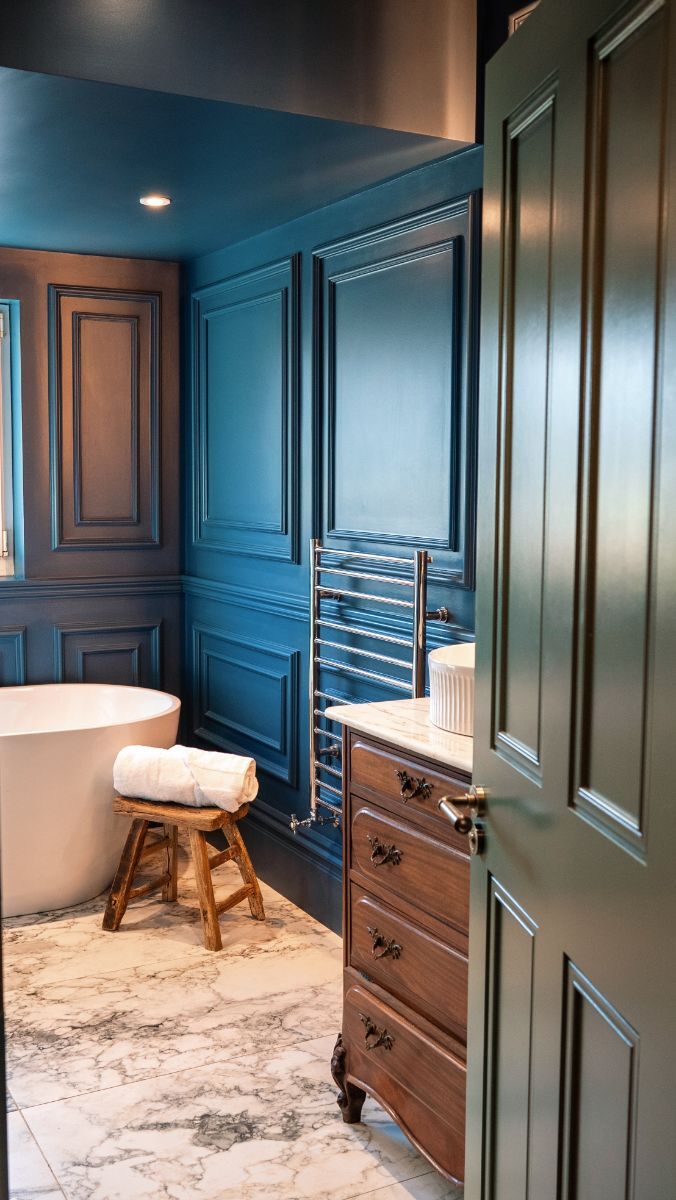
Bathroom tip: Simple wainscoting (left) typically costs £25-50 per m² DIY versus £120-180+ professionally installed. More complex designs (right) still offer substantial savings with DIY approaches.
Regional cost variations
Labour costs vary significantly across the UK:
- London and South East: £40-£60 per hour (40-60% premium)
- Midlands and South: £25-£35 per hour
- North England: £20-£30 per hour
- Scotland and Wales: £20-£30 per hour (plus delivery costs)
How to save money on wall panelling
Smart shopping and planning can cut your costs significantly without compromising on results:
Timing your purchase
- January sales: 15-30% off at major retailers
- End of season clearances in autumn
- Black Friday deals: 20-40% off selected lines
Bulk buying benefits
- Orders over £500: free delivery
- Trade accounts: 10-25% discount
- Group purchases with neighbours or family to hit discount thresholds
- Buying full packs rather than individual strips
Alternative sources
- Reclamation yards for period properties
- eBay bulk lots for larger projects
- Ex-display panels from showrooms
- End-of-line clearances from manufacturers
DIY money-saving tips
If you're going the DIY route, these strategies can save hundreds:
- Use individual MDF strips instead of pre-made kits - often 30-50% cheaper
- Buy paint and primer from trade suppliers rather than retail
- Rent specialist tools rather than buying for one-off projects
- Measure accurately to minimise waste - 10% extra is usually sufficient
- Do the preparation work yourself even if hiring for installation
Does wall panelling add value to your home?
The short answer is yes, but the return depends on execution, location, and your property type.

Where panelling adds most value
- Hallways: Maximum impact from first impressions
- Living rooms: Feature walls create strong focal points
- Dining rooms: Traditional wainscoting suits period properties
- Bedrooms: Panelling behind beds creates hotel-like luxury
- Bathrooms: Waterproof panels reduce maintenance costs
The key is matching your panelling style to your property type and target market. Classic styles like Shaker work across most homes, while ornate panelling suits period properties better than modern builds.
Panelling project examples
Here are some example costs from panelling projects to give you realistic expectations:
Planning tip: Always get at least three quotes for professional work, and remember that the cheapest isn't always the best value if quality suffers.
Getting the best value from wall panelling
Wall panelling costs vary enormously, but smart planning can deliver excellent results without breaking the budget. MDF panels offer the best balance of cost and quality for most projects, while DIY installation can cut total costs by up to 70%.
The calculators and planning tools available make DIY panelling much more achievable than it used to be. What once required carpenter expertise - measuring, spacing, and material calculations - can now be done accurately at home, saving both planning fees and installation costs.
The key is being realistic about your skills, timeline, and budget. A well-executed £500 DIY project often looks better than a rushed £2,000 professional job. Whatever route you choose, factor in 20-30% extra for the inevitable extras and surprises.
Done right, wall panelling is one of the most cost-effective ways to transform your home's interior while adding genuine long-term value.

